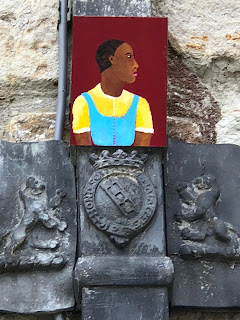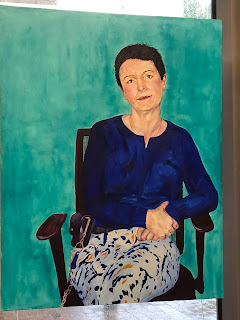Notoriously Militant, The Story of a Trade Union Branch. Sheila Cohen. 2013 Merlin Press. London
p84. 1966 New pay and grading structure introduced.
5 new grades. Women machinists in B grade.
 |
| Even by 1985, machinists were still in B grade |
Removed condition allowances (eg dirty money);
Removed merit allowances (merit awards were hated because they were dependent on your supervisor liking you!).
Moved to service increments. (annual increments)
Womens jobs deemed to be in 'appropriate' grades, without sex discrimination.
Job Evaluation exercises carried out by Urwick, Orr and Partners.
August 1967 Machinists submit claim for skilled C grade.
p86. Ford made a long delay before responding.
Prototype machinists (2) got C grade. (from Eastside Community Heritage oral history interview from Christine Oliver - These were men, who worked nights. Women on days did about 20 seats an hour. Men on nights did 20 seats a shift. But the men were deemed to be more skilled because they worked on innovative materials like vinyl)
Trade Union Shop Steward Rosie Boland "When we go into the Ford Co, we have to pass a test on 3 machines. If we don't pass that test, then we don't get the job. So why shouldn't they recognise us as skilled workers? Freedman & Meredeen, Dynamics, p129.
p87 Still no answer at May 1968, so machinists downed tools.
Categorically a grading dispute. Women were not going down the equal pay route - as there were no male comparators - but skill. It's about skill.
Rosie Boland " What we're concerned with is proving we are skilled workers ... last week they were really ready for another fight, but only for C grade - not for equal pay". Sabby Sagall, Socialist Worker, 21/9/68 pp2-3
Scamp Enquiry August 1968
Described discrimination against the machinists as 'symptomatic of the company's more general discrimination against women'.
Fell short of 'equal pay for work of equal value' demanded by women trades unionists and the Women's lib movement.
Daily Telegraph August 22 1968 Scamp Inquiry rejects Ford Women's claim.
Job profiling conducted on 28 characteristics.
Points allocated were not made known to workers.
Joint Divisional Review Committee received recommendations from the Union for higher markings but was ignored.
Machinists felt that on 5 characteristics the markings were too low.
Ford Bulletin July 5 1968 pp7-10
All women pre 1968 on Wage Grade 4.
6/8d per hour. 7d less than the lowest male grade worker (labourer)!
Machinists had to be multi-functional to cover the higher C grade bench hand, but the C grade benchhand did not have the skills to cover the junior machinist role.
Urwick Orr and Partners recommended full disclosure of job evaluation weightings as 'full knowledge gets full acceptance'.
Ford promised disclosure to unions but did not deliver.
Workers Liberty Organisation 14/7/08
"13 pieces for a head rest ... she has to use her mind"
"Women's speed and dexterity was unequalled in the company and had been significantly undervalued"


























